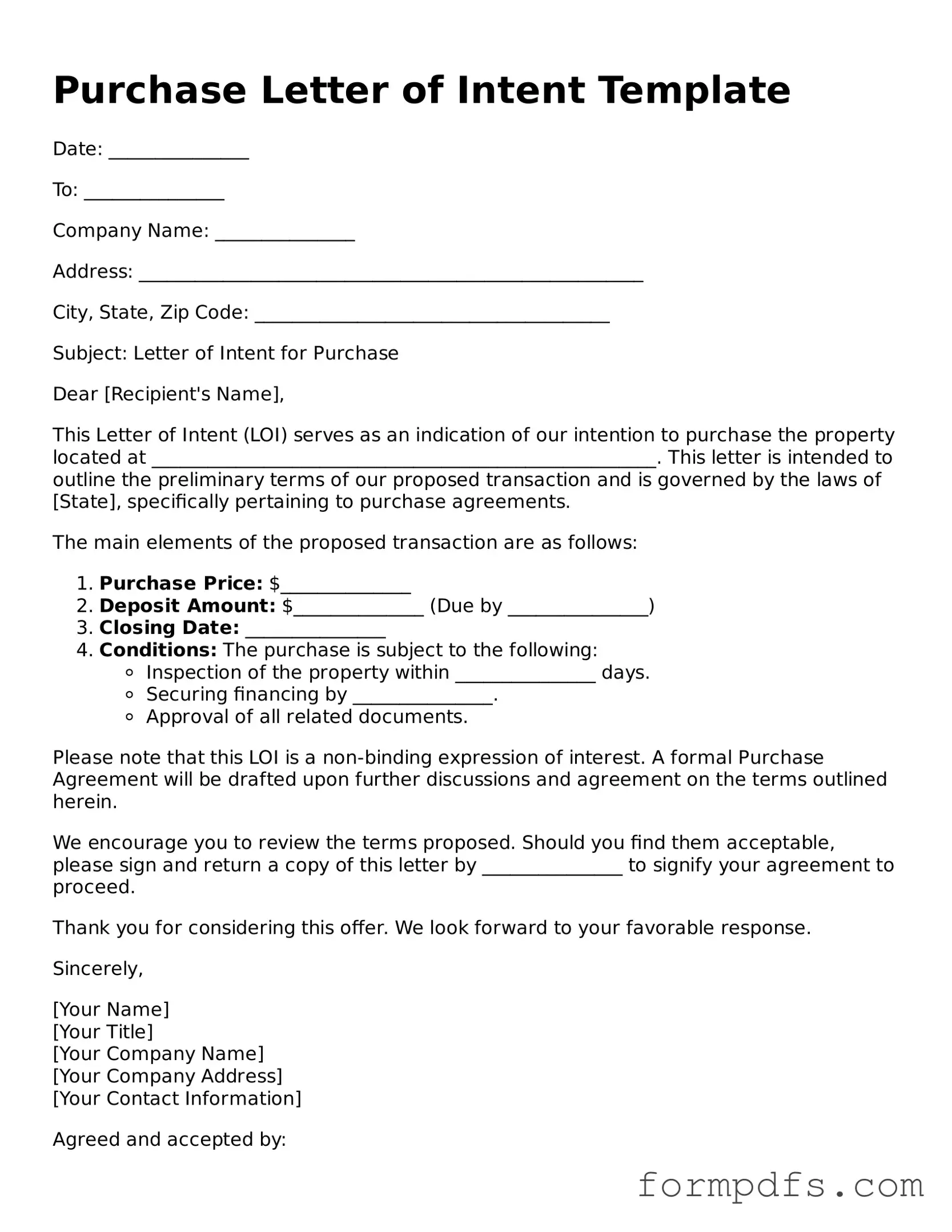What is a Purchase Letter of Intent?
A Purchase Letter of Intent (LOI) is a document that outlines the preliminary agreement between a buyer and a seller regarding the terms of a potential purchase. It serves as a starting point for negotiations and indicates the buyer's serious interest in acquiring the property or business. While it is not a legally binding contract, it sets the stage for future discussions and agreements.
Why is a Purchase Letter of Intent important?
The Purchase Letter of Intent is important because it clarifies the intentions of both parties before entering into a formal purchase agreement. It helps establish key terms such as the proposed purchase price, payment structure, and any contingencies. This clarity can prevent misunderstandings and streamline the negotiation process.
What should be included in a Purchase Letter of Intent?
A well-drafted Purchase Letter of Intent should include several key components: the names of the buyer and seller, a description of the property or business being purchased, the proposed purchase price, payment terms, and any contingencies such as inspections or financing. Additionally, it may outline timelines for closing and any other relevant details that both parties agree upon.
Is a Purchase Letter of Intent legally binding?
Generally, a Purchase Letter of Intent is not legally binding, meaning that either party can walk away from the agreement without legal repercussions. However, certain sections of the LOI, such as confidentiality clauses or exclusivity agreements, may be binding. It is essential to clearly indicate which parts of the document are intended to be binding and which are not.
How do I use a Purchase Letter of Intent?
To use a Purchase Letter of Intent, first, draft the document with the necessary details about the transaction. Both parties should review the LOI, discuss any modifications, and agree on the terms. Once both parties are satisfied, they can sign the document. This signed LOI can then serve as the basis for drafting a more formal purchase agreement.
Can I modify a Purchase Letter of Intent after it has been signed?
Yes, a Purchase Letter of Intent can be modified after it has been signed, but both parties must agree to the changes. It is advisable to document any modifications in writing and have both parties sign the revised document. This helps ensure that everyone is on the same page and reduces the risk of future disputes.
What should I do if I have questions about the Purchase Letter of Intent?
If you have questions about the Purchase Letter of Intent, consider consulting with a legal professional or a qualified document preparer. They can provide guidance tailored to your specific situation and help ensure that your interests are protected throughout the purchasing process.
